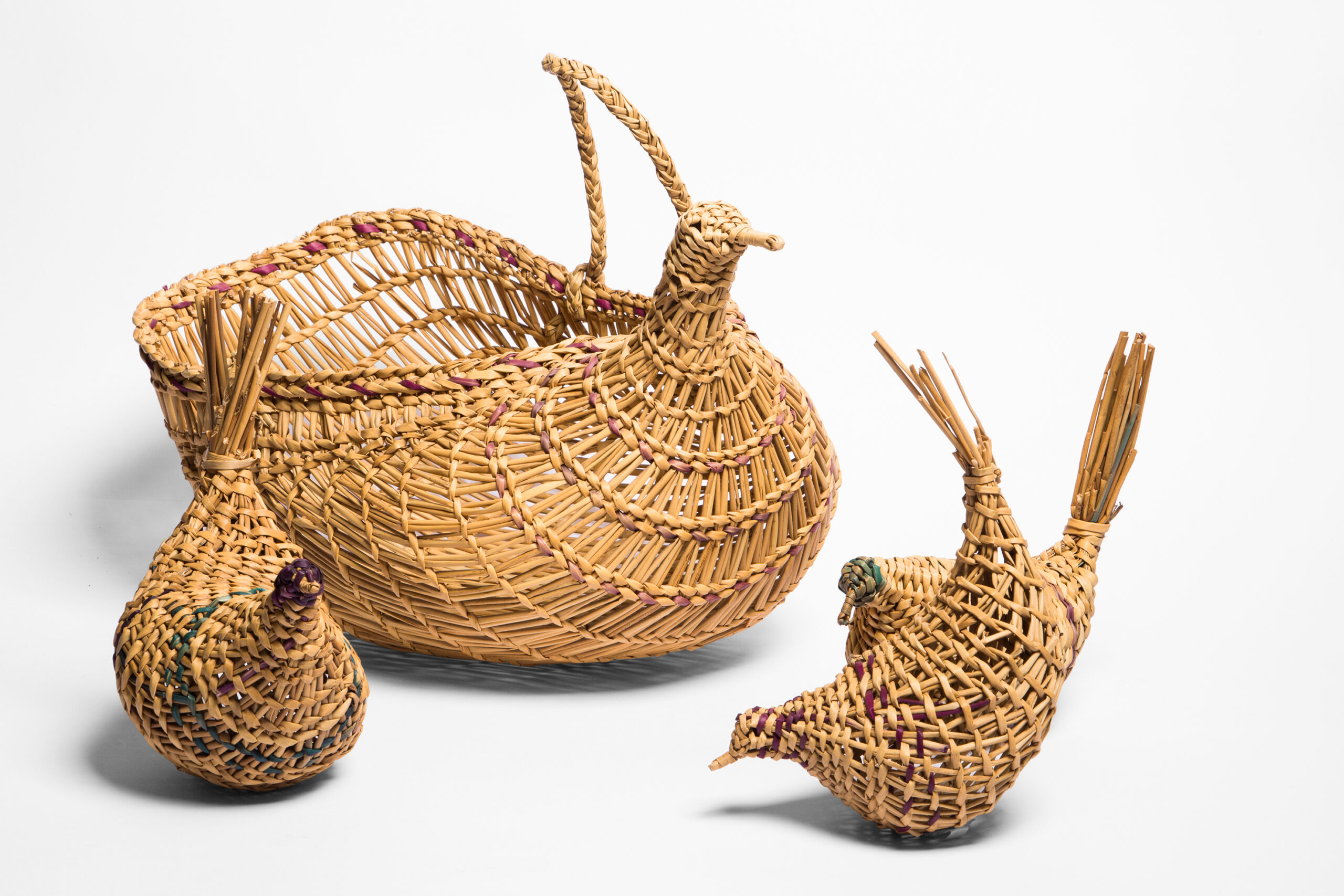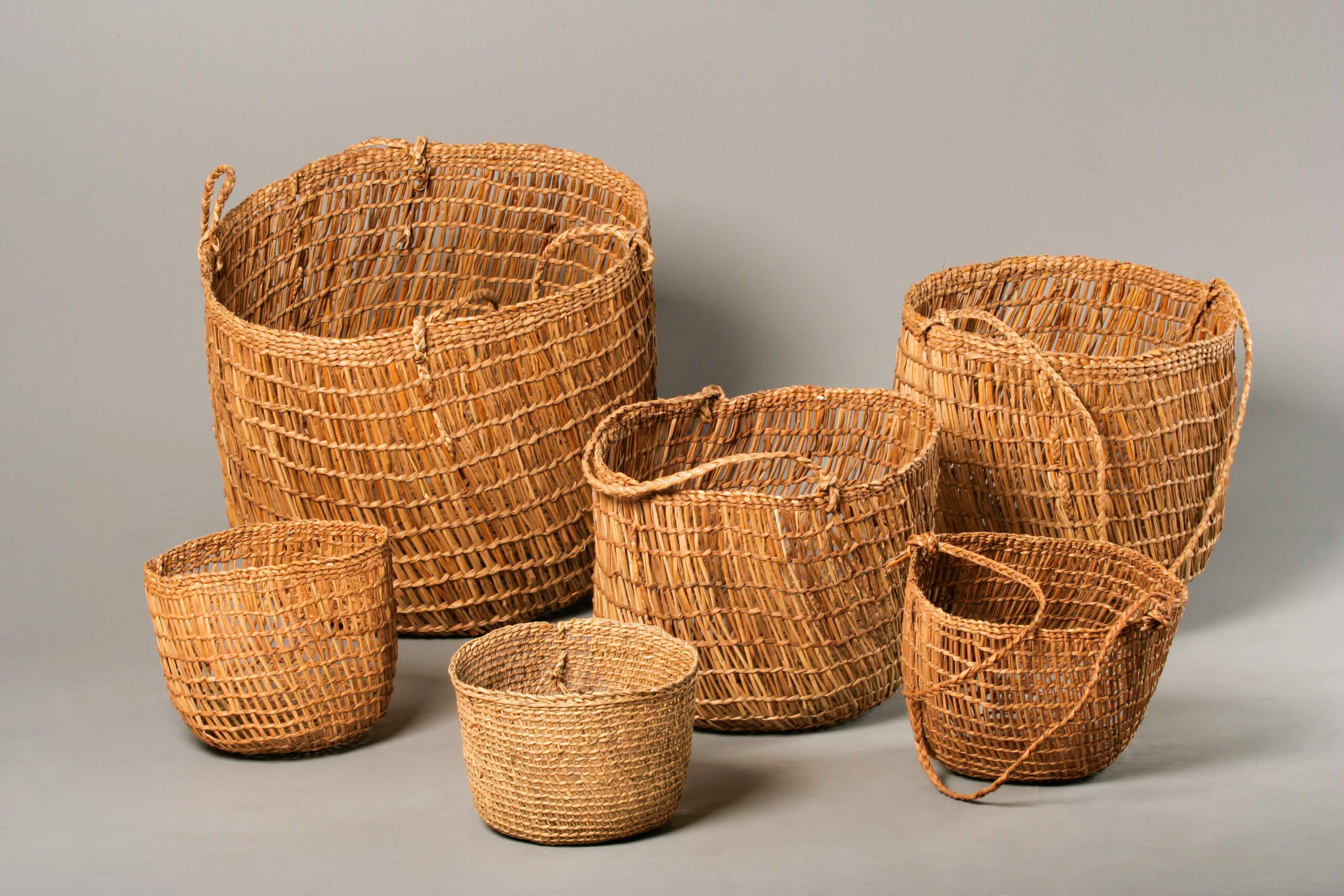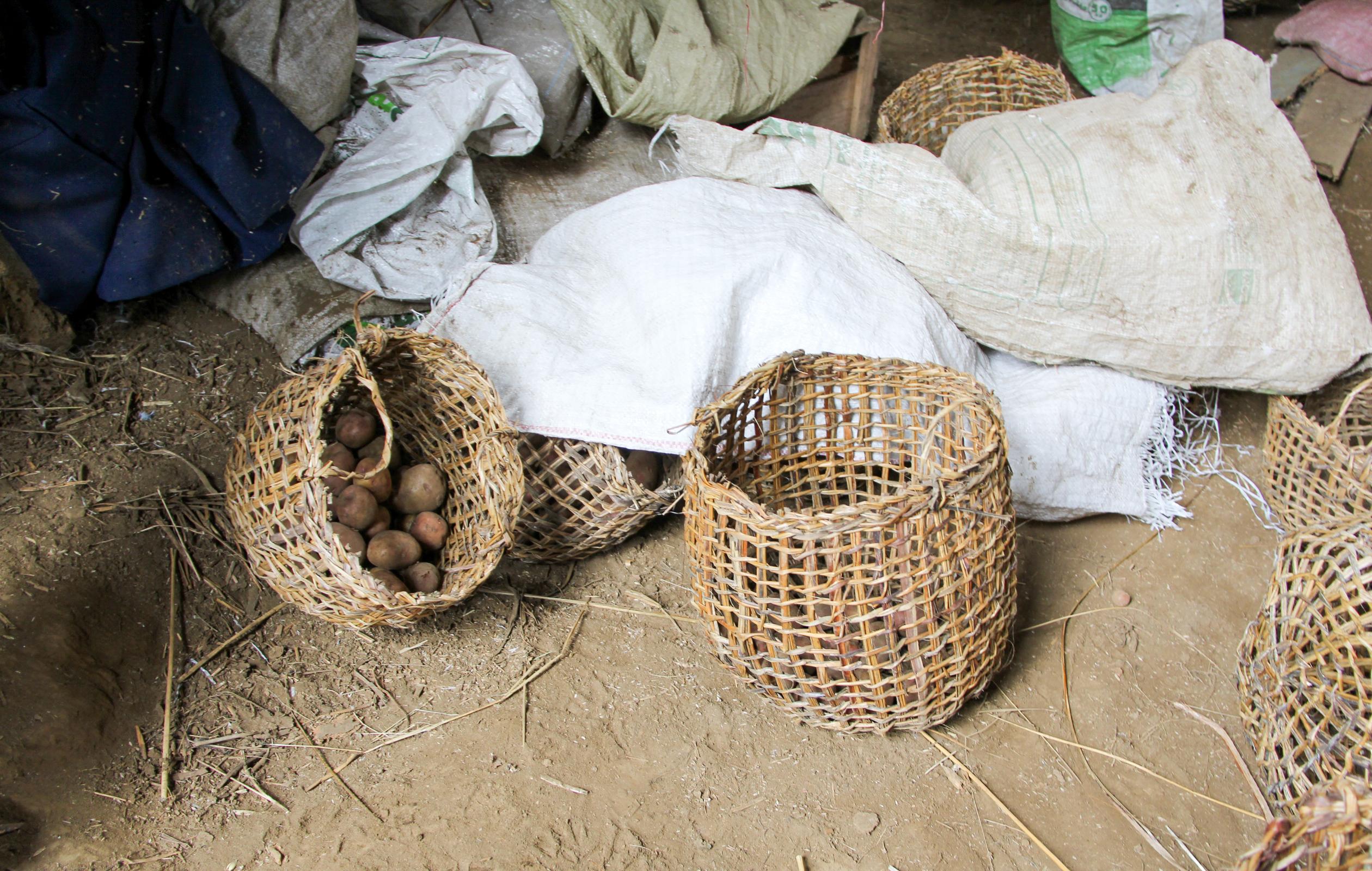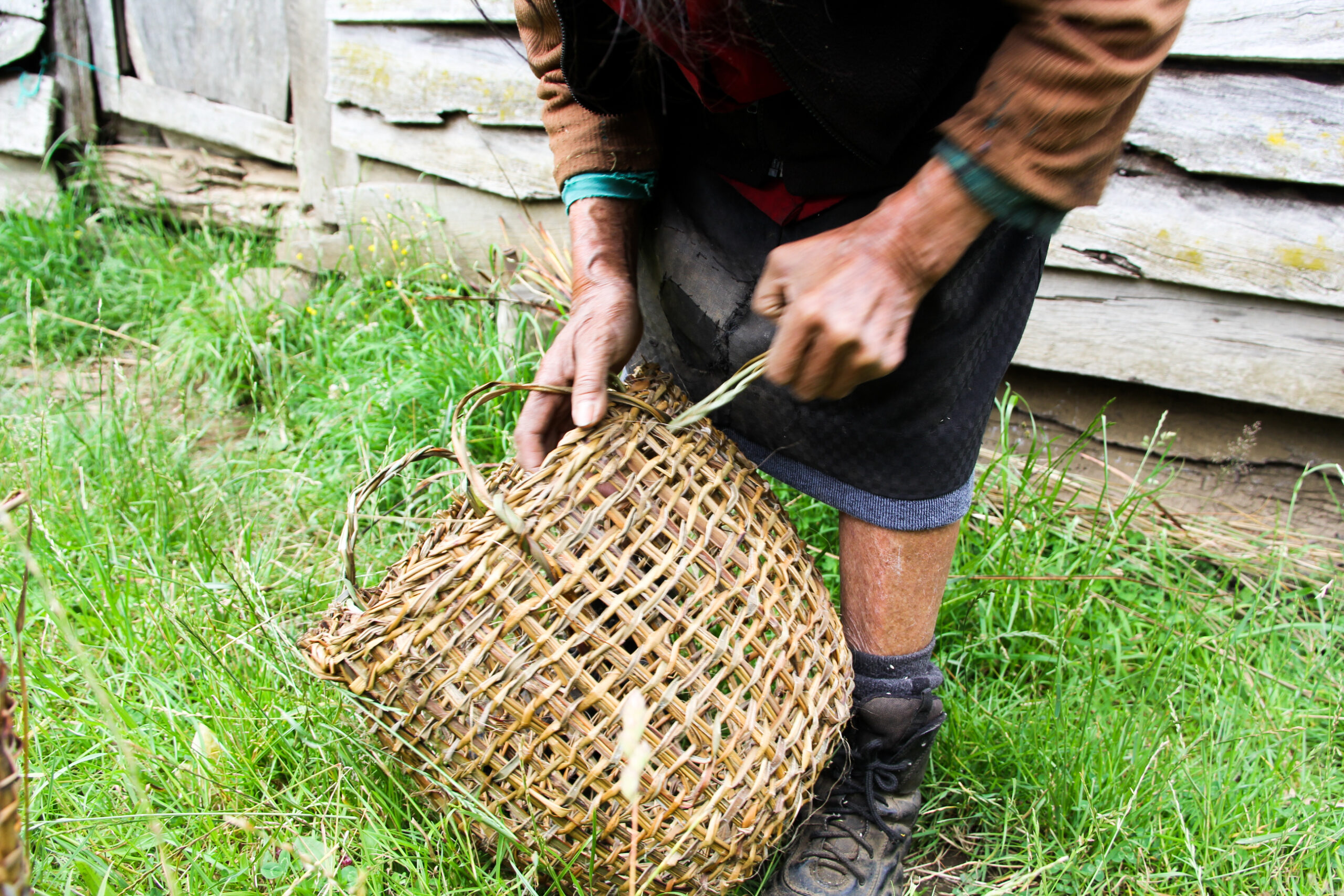Description
La isla Grande de Chiloé es la mayor de las islas que integran el archipiélago de Chiloé, conjunto insular situado en la Región de Los Lagos, en el sur de Chile.
Es atravesada de norte a sur por la cordillera de la Costa. La zona se caracteriza por su actividad marítima, por una fuerte religiosidad, por sus artesanías en fibras, lana y madera, y principalmente, por sus tradiciones culturales.
El archipiélago está cubierto de una profusa vegetación, con bosques valdivianos y una decena de humedales, lo que permite el crecimiento de una gran variedad de fibras vegetales que se han utilizado desde hace años en la fabricación de objetos en cestería.
Los canastos fueron y son los contenedores utilizados para proveer lo necesario para la subsistencia que da la naturaleza. El oficio de la cestería es una tradición que es transmitida generalmente por vía materna.
Este oficio es realizado en su mayoría por mujeres, desde la recolección y preparación de los materiales hasta el tejido y la venta final.
En la confección de la cestería chilota se usan materiales que provienen de la flora local, como los “junquillo” (Juncussp.), “ñapo” (Juncus sp.), “manila” (Phormium tenax), “ñocha” (Cyperus sp.), “quilineja” (Luziariga radicans) y diversas especies de enredaderas conocidas como “boqui” (Boquila trifoliolata, Campsidium valdivianum, Cissus striata).
La técnica del tejido usada es el apareado simple que se practica en todo el archipiélago y el tejido aduja, que es usado en la isla Llingua y sectores cercanos. El uso de herramientas externas es escaso, demostrando así la antigüedad de este oficio.
En relación a las fibras, la recolección de cada una tiene su particularidad, así como también la preparación y utilización en determinado tipo de tejido. Todo esto es identificado y aplicado por las cesteras. Antiguamente era mayor la diversidad de objetos a tejer. Hoy sólo algunos de ellos mantienen su función original, principalmente los de acarreo y guardado, y algunos como el chaiwe y el canasto de prensa para hacer la chicha. Estos son usados generalmente en lugares más apartados de la isla, por isleños mayores que mantienen sus tradiciones y en fiestas costumbristas.
English
Chilota basketry
The Isla Grande de Chiloé is the largest of the islands that make up the Chiloé archipelago, a group of islands located in the Los Lagos Region, in southern Chile. It is crossed from north to south by the Cordillera de la Costa mountain range. The area is characterised by its maritime activity, its strong religiosity, its fibre, wool and wood crafts, and above all its cultural traditions.
The archipelago is covered by profuse vegetation, with Valdivian forests and a dozen wetlands, which allows the growth of a great variety of vegetable fibres that have been used for years in the manufacture of basketry objects.
The baskets were and still are the containers used to provide what nature provides for subsistence. The craft of basket weaving is a tradition that is generally passed down through the mother’s side. This craft is mostly carried out by women, from the collection and preparation of the materials to the weaving and the final sale. In the making of Chiloé basketry, materials from the local flora are used, such as “junquillo” (Juncussp.), “ñapo” (Juncus sp.), “manila” (Phormium tenax), “ñocha” (Cyperus sp.), “quilineja” (Luziariga radicans) and various species of creepers known as “boqui” (Boquila trifoliolata, Campsidium valdivianum, Cissus striata).
The weaving technique used is simple pairing, which is practised throughout the archipelago, and “aduja” weaving, which is used on Llingua Island and nearby areas. The use of external tools is rare, demonstrating the antiquity of this craft.
In relation to the fibres, the collection of each one has its own particularity, as well as the preparation and use in a certain type of weaving. All of this is identified and applied by the basket weavers.
In the past, there was a greater diversity of objects to weave. Today only some of them maintain their original function, mainly those for carrying and storing, and some such as the “chaiwe” and the press basket for making “chicha”. These are generally used in more remote parts of the island, by older islanders who maintain their traditions and in traditional festivals.





Reviews
There are no reviews yet.